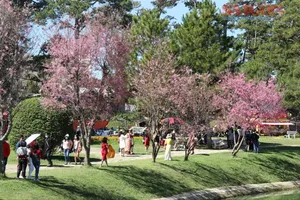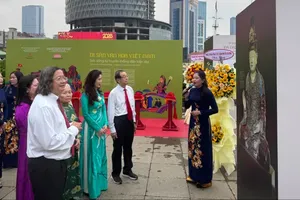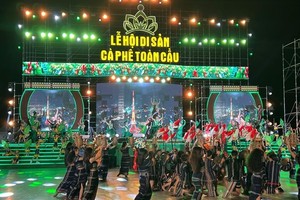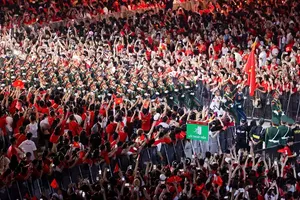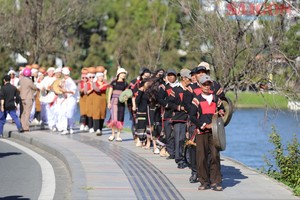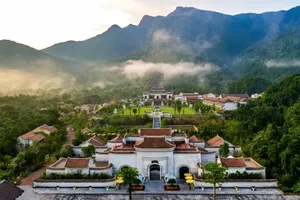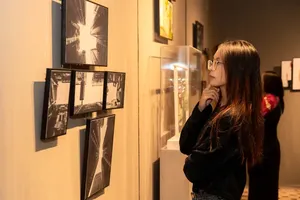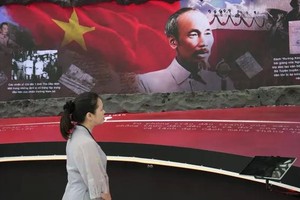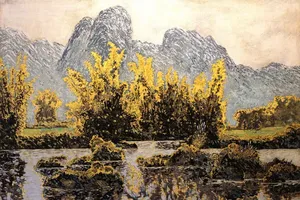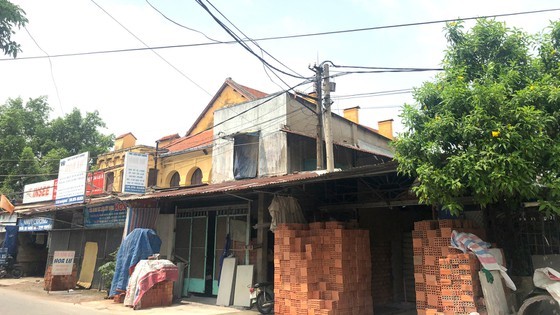
Minimized area
The citadel is located in the heart of Bien Hoa city on Phan Chu Trinh street, only 300m from the headquarters of Bien Hoa City People's Committee.
The relic site includes gates, fortress-like walls, bunkers, a villa in the northwest side, a Nguyen Dynasty architecture built with laterite bricks, a 2-storey house and warehouses built after 1975.
The Northwest villa inspired by French architecture has three floors with load-bearing walls and tiled roof.
Nguyen Cong Trinh, a man who has lived in the vicinity for a long time, said the citadel area is only 1/8 of what is used to be due to encroachment. Trinh is also a nephew of author Luong Van Luu, who wrote “The summary of Bien Hoa’s historic chronicle”.
On the left of the city gate, about 10 households encroached upon land to build a house to live and trade 20 years ago, there are some households that have a red book and carry out the sale, transfer, sleazy trade, which makes the aesthetic go away.
About 10 households have settled to the left of the front gate since 20 years before, many owning an official land use rights certificate.
On the right side of the gate is 100m of administrative houses built on the citadel’s outer wall foundation, deforming the wall. The entire wall runs over 400m long but a chunk on the East side has collapsed, leaving only the foot of the foundation. The inner garden looks desolated with very few greens, invaded by wild grass and has no visible walkway. It has become a parking spots for office people who work nearby.
In the northwestern villa area, the paint on walls are peeling off and covered in moss. Tree roots from the garden outside are poking through the walls, revealing rusted steel beams. The attic is also at risk of collapsing.
Despite the carefully painted wooden staircase and spacious corridors, all 8 rooms in the villa look empty with scarcely any items, and a set of working desks.
There are 3,277 valuable artefacts found inside and around the citadel, 98.1% of which are household items of various historical periods and cultural origins, which are not properly maintained or put on display.
Haphazard renovation
Right on the campus to the right of the gate are temporary headquarters of several units under the provincial Department of Culture, Sports and Tourism, including the Dong Nai Monuments and Landmarks Management Board.
Nearby, built back-to-back with the ancient walls are private store fronts encroaching on land plots belonging to the citadel area. The Monuments and Landmarks Management Board in 2015 requested higher-ups to grant them permission to retrieve these plots, but measures have not been taken since.
The Dong Nai People’s Committee from 2014 to 2017 invested more than VND41 billion (about US$1.8 million) in an attempt to restore parts of the citadel as well as build a number of ancillary structures for tourists.
However, the renovations were done haphazardly and the front gate area is still cluttered with store fronts. As a result, the citadel only sees 2,000-3,000 visitors each year, a very small number compared to the national scale of it. Even people who have lived in Bien Hoa for a long time are not aware of this site.
A site manager said that renovation works done so far only restored parts of the wall built by French colonizers, while failed to articulate the appeal of an old military/administrative base in its architectural beauty.
Tran Quang Toai, former Director of the Dong Nai Department of Culture, Sports and Tourism suggested investing in cultural tourism services and showing documentary films about the foundation and development of the site to attract tourists.
The Bien Hoa Old Citadel lies at the intersection of many provinces and the waterway tourism routes on Dong Nai River, so it can easily be included in tour packages in the area, he said.
